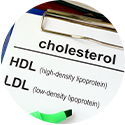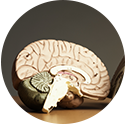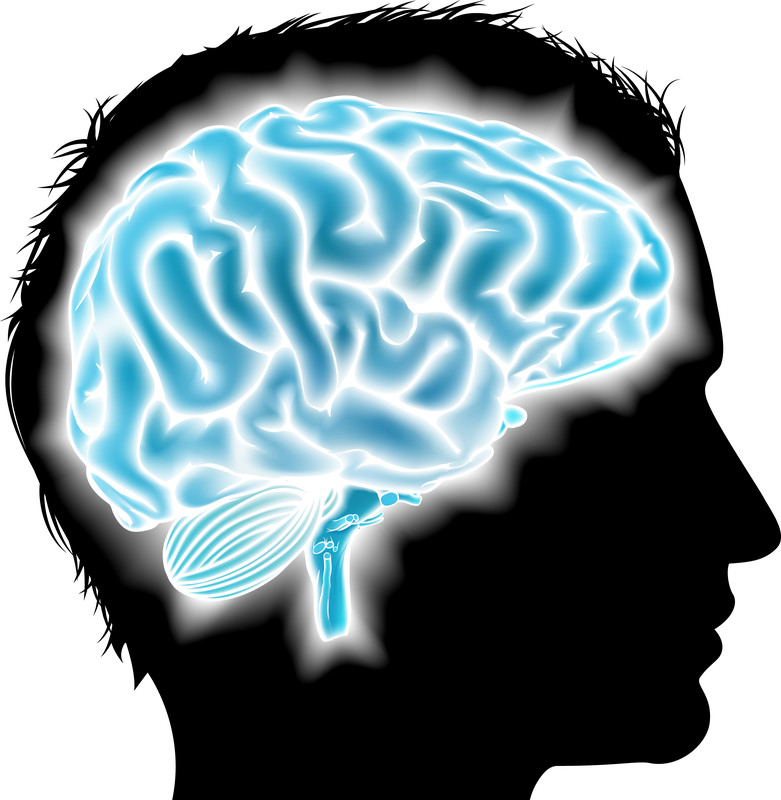Alzheimer’s disease is a complicated and complex disease. At the Magaziner Center for Wellness, we approach Alzheimer’s disease as a multi-factorial challenge. Research has shown us that there can be many factors that can cause and contribute to Alzheimer’s Disease. These factors range from environmental toxins to poor nutrition choices to heavy metal toxicity. Every day new studies come out suggesting new revelations in how the disease develops, how it may be prevented, and how it may be treated. There is currently no single treatment that alters the course of this disease. However, an increasing amount of evidence suggests that changes in the way the body handles iron and other metals may lead to the onset of Alzheimer’s disease symptoms. Addressing these changes as they occur may have the desired preventative effect.
In our office, patients with concerns surrounding Alzheimer’s disease are examined in a way to help them understand his/her unique biochemistry. His/her biochemistry reacts to pollutants and toxins differently and requires an individualized course of treatment. While the disease may look similar from person to person, we are not treating the disease, we are healing the individual.
In this article we will focus on one of the factors that we look at in our patients with Alzheimer’s disease concerns. The role of excessive iron levels in the body and brain.
The role of iron in Alzheimer’s disease
An October 2020 study in the International journal of molecular sciences (1) looked at iron, not only in how it impacts the development of Alzheimer’s disease, but in the, for many people, concurrent problem of macular degeneration. Here is the research:
“Age-related macular degeneration (AMD) and glaucoma are degenerative conditions of the retina and a significant cause of irreversible blindness in developed countries. Alzheimer’s disease, the most common dementia of the elderly, is often associated with Age-related macular degeneration and glaucoma. The cardinal features of Alzheimer’s disease include extracellular accumulation of amyloid β (Aβ) and intracellular deposits of hyper-phosphorylated tau (p-tau).
Neuroinflammation and brain iron dyshomeostasis accompany Aβ and p-tau deposits and, together, lead to progressive neuronal death and dementia. . . Visual abnormalities are prominent in Alzheimer’s disease and are believed to develop before cognitive decline.”
In this study the researchers reviewed recent information on Aβ, p-tau, chronic inflammation, and iron dyshomeostasis as common pathogenic mechanisms linking the three degenerative conditions, and iron chelation as a common therapeutic option for these disorders.”
In May 2021 another study (2) made this link and suggested an increased risk of Alzheimer’s disease among patients with age-related macular degeneration.
A pressing need to design multi-target-directed ligands (a chelator – something to remove heavy toxic metals from the body)
In the March 2019 edition of the medical journal Neural Regeneration Research, (3) doctors from the Universities of Louisiana and Iowa write, “Neurodegenerative diseases such as Alzheimer’s, Huntington’s and Parkinson’s diseases have (a) multifaceted nature because of the different factors contributing to their progression. The complex nature of neurodegenerative diseases has developed a pressing need to design multi-target-directed ligands (a chelator – something to remove heavy toxic metals from the body) to address the complementary pathways involved in these diseases.” Part of this need they add is a need to research “therapeutics based on iron chelation strategy.”
Iron is an essential mineral for brain health and development. It can also be a villainous mineral when the delicate balance between the amounts of iron necessary for brain function is far exceeded. Excessive iron in the brain has been implicated in many neurological diseases including Alzheimer’s Disease.
The very complicated role of iron in Alzheimer’s disease is illustrated in an August 2019,(4) study published in the journal Signal Transduction and Targeted Therapy. These are excerpts from that research.
Too much iron can cause Alzheimer’s disease.
During normal aging, the gradual accumulation of iron is observed in some brain areas, such as the substantia nigra, an area of the brain in part responsible for movement and understanding positive response or a reward, the putamen, an area of the brain in part responsible for limb movement and is thought to be implicated in Tourette’s Syndrome and Parkinson’s Disease, the globus pallidus, an area of the brain also involved in voluntary and involuntary movements such as tremors and the caudate nucleus, an area of the brain involved in memory, learning, language, and other cognitive functions.
An increase in the level of iron in Alzheimer’s disease brains was first demonstrated in 1953. More recently, through the use of magnetic resonance imaging (MRI), iron accumulation was found in Alzheimer’s disease and was shown to be mainly localized to certain brain areas, such as the parietal cortex, motor cortex, and hippocampus. Studies of gene mutations that affect the metabolism of iron have suggested that the dyshomeostasis (the breakdown of the delicate balancing system of iron metabolism) plays a role in neuronal death, such as the neuronal death that occurs in neurodegenerative disorders such as Alzheimer’s disease.
As a potent source of highly toxic hydroxyl radicals, redox-active iron is actively associated with senile plaques and neurofibrillary tangles (NFTs), the primary marker for Alzheimer’s disease..
Not enough iron can cause Alzheimer’s disease
Iron deficiency is also frequently observed and reported in Alzheimer’s disease. Iron deficiency may partially account for hypometabolism (the lowered metal processing function) in Alzheimer’s disease since women with iron deficiency anemia have a higher prevalence of dementia.
It is hard to get rid of excess iron
This was discussed in research by doctors at The Florey Institute for Neuroscience and Mental Health at The University of Melbourne published in the Journal of Neurochemistry. (5)
“Brain iron homeostasis (balance) is increasingly recognized as a potential target for the development of drug therapies for aging-related disorders. Dysregulation of iron metabolism associated with cellular damage and oxidative stress is reported as a common event in several neurodegenerative disorders such as Alzheimer’s, Parkinson’s, and Huntington’s diseases.
Iron plays a crucial role in maintaining normal physiological functions in the brain through its participation in many cellular functions such as mitochondrial respiration (the creation of energy), myelin synthesis (the creation of the protective myelin sheath that protects the nerves), and neurotransmitter synthesis and metabolism.
However, excess iron is a potent source of oxidative damage through radical formation and because of the lack of a body-wide export system, a tight regulation of its uptake, transport and storage is crucial in fulfilling cellular functions while keeping its level below the toxicity threshold.
Iron plays a fundamental role in maintaining the high metabolic and energetic requirements of the brain. However, iron has to be maintained in a delicate balance as both iron overload and iron deficiency are detrimental to the brain and can trigger neurodegeneration.”
In a study from 2018, published in the journal Frontiers in Neuroscience, (5) investigators added:
“Abnormal iron metabolism generates hydroxyl radicals. . . (it) triggers oxidative stress reactions, damages cell lipids, protein and DNA structure and function, and ultimately leads to cell death. There is an imbalance in iron homeostasis in Alzheimer’s disease. Excessive iron contributes to the deposition of β-amyloid (the main component of the amyloid plaques found in Alzheimer’s disease) and the formation of neurofibrillary tangles (simply protein plaque clumps), which in turn, promotes the development of Alzheimer’s disease.
Therefore, iron-targeted therapeutic strategies have become a new direction. Iron chelators . . . have received a great deal of attention and have obtained good results in scientific experiments and some clinical trials ”
The theory is that chelation, with a special focus on iron ions, is a valuable approach for treating Alzheimer’s disease.
The role of iron in diabetes induced Alzheimer’s disease
The research above gives good evidence that iron and Alzheimer’s disease are linked. But at the onset of this article we told you that Alzheimer’s disease is a complex disease. Let’s throw diabetes into the mix to illustrate this point.
In the journal Biometals: An International Journal on the Role of Metal Ions in Biology, Biochemistry, and Medicine,(6) investigators discussed this complexity:
“Several studies have demonstrated that diabetes involving insulin resistance and glucose tolerance could lead to Alzheimer’s disease, ultimately resulting in cognitive dysfunction. Even though the relationship between diabetes and Alzheimer’s disease was indicated by significant evidences, the critical mechanisms and metabolic alterations in diabetes induced Alzheimer’s disease are not clear.
Recently, iron metabolism has been shown to play multiple roles in the central nervous system. Iron deficiency and overload are associated with neurodegenerative diseases. . . previous studies have shown that iron is involved in the aggravation of insulin resistance. Considering these effects of iron metabolism in central nervous system, we expect that iron metabolism may play crucial roles in diabetic Alzheimer’s disease brain.”
Can you simply get rid of the iron without addressing concerns of diabetes? Insulin-resistance? Glucose intolerance? These are just some of the compounding factors that can impact how you address the challenges of Alzheimer’s disease.
Inflammation, Iron and Alzheimer’s Disease
A 2021 study in the Journal of Alzheimer’s (7) disease acknowledges that while accumulation of iron is a consistent feature of Alzheimer’s disease brains. The underlying cause of how this iron accumulates remains debatable.
One theory that the researchers speculated was that local hepcidin (which regulates iron levels in the brain) synthesized by brain cells contributes to iron accumulation in Alzheimer’s disease brains. Let’s get some background information from another paper published in 2018.(8) In this paper Hepcidin is described as “emerging as a new important factor in brain iron homeostasis. Studies suggest that there are two sources of hepcidin in the brain; one is local and the other comes from the circulation. Little is known about the molecular mediators of local hepcidin expression, but inflammation and iron-load have been shown to induce hepcidin expression in the brain.”
Returning to the 2021 study, the researchers suggested that that upregulation of brain hepcidin is mediated by IL-6 (an inflammatory agent), a known transcriptional activator of hepcidin and this results in the accumulation of iron in Alzheimer’s disease brains. The increase in hepcidin is disease-specific, and increases with disease progression, implicating Alzheimer’s disease-specific pathology in the accumulation of iron.” When Alzheimer’s progresses, so does the levels of hepcidin induced by inflammation.
Another 2021 study (9) sums up this connection as: “Connected through an intricate network of molecular interactions, neuroinflammation and iron accumulation establish a noxious circle that sustains the progressive neurodegeneration process observed in Alzheimer’s disease and Parkinson’s Disease.”
Chelation and Iron Toxicity
There are many ways to chelate iron out of the body. At the Magaziner Center for Wellness we begin our treatment of Alzheimer’s patients with a full analysis of a person’s mitochondrial function, including testing for heavy metal toxicity. If detected, we utilize chelating agents to rid the body of these metals, as well as other natural detoxification techniques.
A 2018 paper (10) suggests “overwhelming evidence shows that iron accumulation in the brain may contribute to neurodegenerative processes, as shown in recent reviews. . . Recently, iron chelation has been introduced as a new therapeutic concept for the treatment of neurodegenerative diseases that have a component of metal ion accumulation.
We work to repair oxidative damage with Hyperbaric Oxygen Therapy and the use of antioxidant nutritional supplements including Vitamin E, Vitamin B12 and folate, amino acids, and fatty acids as well as the intake of “superfoods” known for their natural healing properties.
In addition, we utilize intravenous vitamin infusions to help regulate any nutrient imbalances and vitamin and mineral deficiencies. To balance the flow of energy and help promote clearer thinking, we also utilize ONDAMED®, a high-tech biofeedback machine designed in Germany.
If you would like to explore these options, please contact our office so we can start a conversation with you.
Related Articles
Estrogen Therapy For Women With Mood And Depression Disorders
Green Tea and Alzheimer’s Disease
Green Tea and Alzheimer’s Disease
References
1 Ashok A, Singh N, Chaudhary S, Bellamkonda V, Kritikos AE, Wise AS, Rana N, McDonald D, Ayyagari R. Retinal Degeneration and Alzheimer’s Disease: An Evolving Link. Int J Mol Sci. 2020 Oct 2;21(19):E7290. doi: 10.3390/ijms21197290. PMID: 33023198.
2 Wen LY, Wan L, Lai JN, Chen CS, Chen JJ, Wu MY, Hu KC, Chiu LT, Tien PT, Lin HJ. Increased risk of Alzheimer’s disease among patients with age-related macular degeneration: A nationwide population-based study. Plos one. 2021 May 7;16(5):e0250440.
2 Ibrahim MM, Gabr MT. Multitarget therapeutic strategies for Alzheimer’s disease. Neural Regen Res. 2019 Mar;14(3):437-440. doi: 10.4103/1673-5374.245463.
3 Liu PP, Xie Y, Meng XY, Kang JS. Erratum: Author Correction: History and progress of hypotheses and clinical trials for Alzheimer’s disease. Signal Transduct Target Ther. 2019 Sep 23;4:37. doi: 10.1038/s41392-019-0071-8. Erratum for: Signal Transduct Target Ther. 2019 Aug 23;4:29. PMID: 31638618; PMCID: PMC6799801.
4 Belaidi AA, Bush AI. Iron neurochemistry in Alzheimer’s disease and Parkinson’s disease: targets for therapeutics. J Neurochem. 2016 Oct;139 Suppl 1:179-197. doi: 10.1111/jnc.13425. Epub 2016 Feb 10.
5 Guo C, Liu JL, Fan YG, Yang ZS, Wang ZY. Iron and Alzheimer’s disease: From Pathogenesis to Therapeutic Implications. Frontiers in neuroscience. 2018;12:632.
6 Chung JY, Kim HS, Song J. Iron metabolism in diabetes-induced Alzheimer’s disease: a focus on insulin resistance in the brain. Biometals. 2018;31(5):705-714.
7 Chaudhary S, Ashok A, McDonald D, Wise AS, Kritikos AE, Rana NA, Harding CV, Singh N. Upregulation of Local Hepcidin Contributes to Iron Accumulation in Alzheimer’s Disease Brains. Journal of Alzheimer’s Disease.(Preprint):1-1.
8 Vela D. Hepcidin, an emerging and important player in brain iron homeostasis. Journal of translational medicine. 2018 Dec;16(1):1-8.
9 Urrutia PJ, Bórquez DA, Núñez MT. Inflaming the brain with iron. Antioxidants. 2021 Jan;10(1):61.
10 Nuñez MT, Chana-Cuevas P. New perspectives in iron chelation therapy for the treatment of neurodegenerative diseases. Pharmaceuticals. 2018 Dec;11(4):109.





































Recent Comments